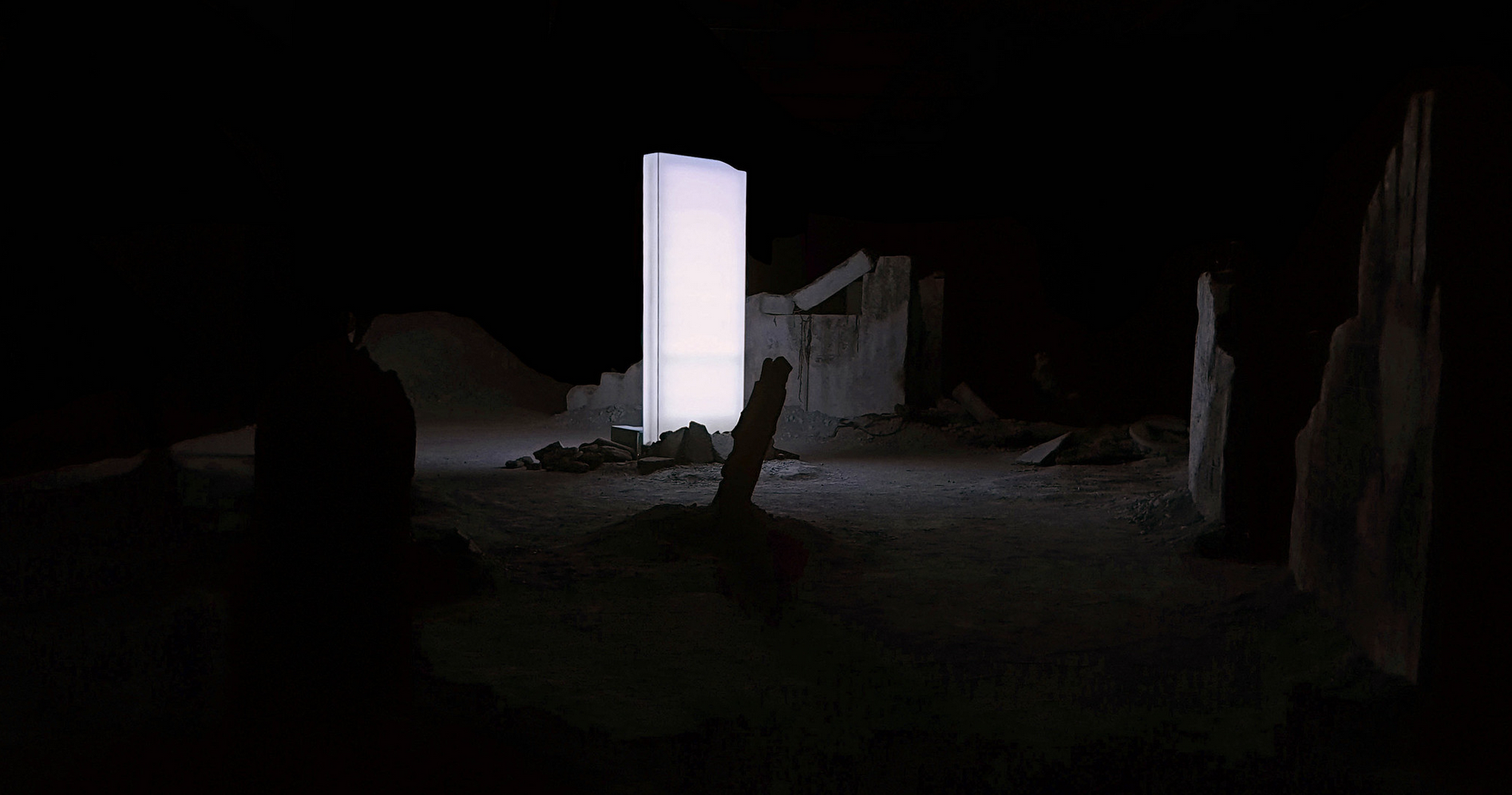
It’s no wonder that our attention-deficient world has moved to consuming media through 3D virtual reality headsets: It completely monopolizes your attention, a rarity in our multi-media, multitasking reality. One altered experience at a time, the technology cuts off viewers from other stimuli. With this mini movie-theatre on your face, you exist in a different reality, even if for a few moments. The New Frontier category, now in its 14th year at Sundance Film Festival, is the space dedicated for these works which use new technology for storytelling, and has expanded into several exhibits, group cinematic experiences, and even phone-based apps that create site-specific mixed reality works around Old Town Park City during the festival. Here is one of the exhibits from the New Frontier Central that monopolized our attention:
Solastalgia, by Antoine Viviani and Pierre-Alain Giraud, France

“Let’s dive into an imaginary future: on a land that has become unlivable, the only form of life that exists is a digital chimera that encapsulates the fruits of our dreams and nightmares,” begins the program. Viewers, who are each prepped with a mixed reality Microsoft HoloLens 2 headset, and the backstory that each who enters is a visitor to Earth after all of humanity has perished, for reasons unknown, are left to explore the 60-sq.-meter set. Rather than a complete virtual reality headset, the clear lens on the headset allows viewers to see the set, complete with sand and rocks underfoot, dead trees, and the ruins of a house. As viewers go deeper into the 10-minute experience, various holographic scenes appear.
“A long time ago, the world was not enough…” begins the narrator of the post-apocalyptic mixed reality experience, as viewers stare into a doorway-sized pillar of light in the middle of the exhibit. This pillar of light, like a beacon of truth to the reality that once was, is also much like the deliverer of the bad news: Earth is no longer livable.
As viewers pan their vision toward the dead tree, green leaves appear on its nonexistent branches with the help of the mixed reality headset. Another corner beckons (or repels) viewers with the sight of acid rain in the distance. As you walk the circular pathways, viewers find scenes of the last ghosts of humanity lingering in various corners of the exhibit, which are activated as you approach. Two lovers spoon, a woman speaks about her memories, a guy sits with his shotgun in hand. These are the last ghosts of humanity, stuck in hologram form. Some scenes touch on the absurdity of humanity, such as with the man cradling his shot gun, rambling about who knows what; and some speak to our most important experiences we can have during our time on Earth––moments of love and compassion for one another.
The word solastalgia, meaning a form of mental or existential distress caused by environmental change, gives a foreboding descriptor of the exhibit. Creators Viviani and Giraud ask some important questions with this piece: How do we inhabit this world? And does harnessing the power of technology in the end help us or make us more blind to the world around us?
Inspired by the Argentinian author, Adolfo Bioy Casares’ book from the 1950s, The Invention of Morelm, Viviani tells me about the source of the idea of the SOLAS machine in Solastalgia that holds the holograms in the exhibit. He asks: “What do we really want with technology? What do we want with this dream of power? We know we have a very bad effect on the planet. At the same time, the promises of technology are bigger than ever. Is there a connection between these two things?”
While parts of the story surrounding the machine encapsulating these hologragrams were hard for me to entirely absorb in the 10 short minutes of the exhibit, I was most intrigued by what the exhibit stirred in me about our humanity. What are we here for? Connection.

The ghosts, while other-worldly and creepy, as almost part of a nightmarish video game, were so sweet and human. By observing humanity as an outsider, you felt sorry for these poor humans.
Beyond fixing our negative affect on the planet, what will be left for us to figure out is how we treat one another, and how we treat ourselves. If we treat the earth, each other, and ourselves with more kindness, more compassion, could we get out of this environmental mess we’ve made? We don’t have to wait until the planet becomes a shell of its former self in order to be forced to rethink how we live on this planet–– Viviani and Giraud have created this possible reality for us.
The full version of Solastalgia, traveling to museums around the world for three months at a time, runs for an hour. are for 12+ people, in a 500 sq. meter space. In November 2019, the installation debuted in Rennes, France, at the Champs Libres Art Center, where it will play until March. In summer 2020, the exhibit will take up residence at the National Gallery of Iceland in the Reykjavik Art Festival until October.
The version of Solastalgia that has been adapted for Sundance Film Festival will be on view until February 2, at the New Frontier Central, and is open to credential holders. More information about times can be found at Sundance.org.
